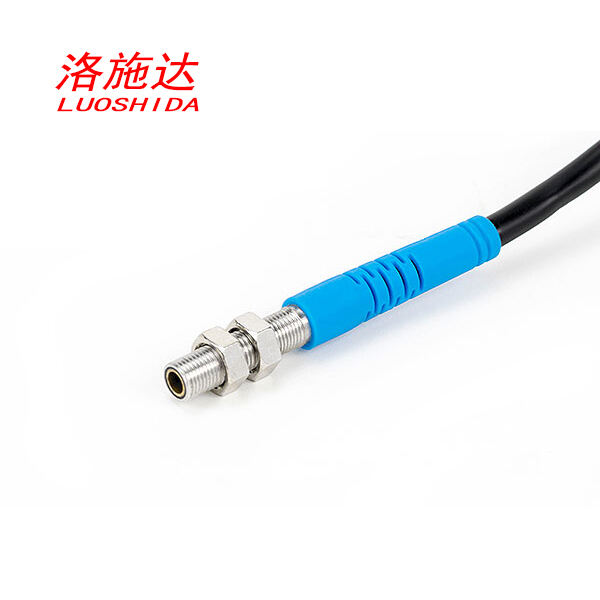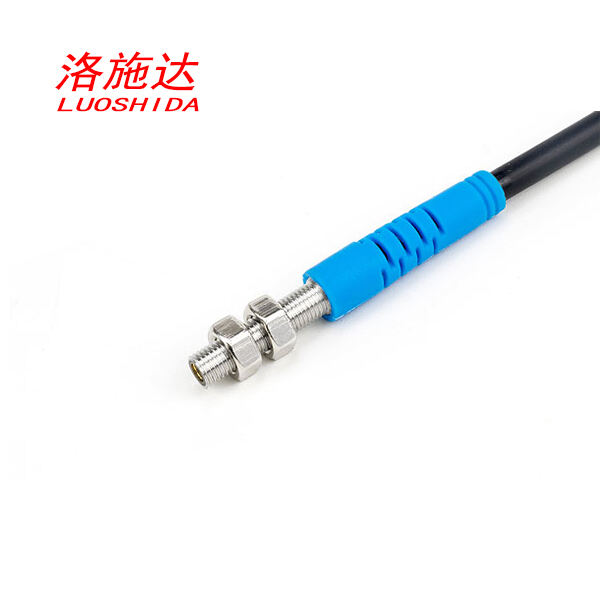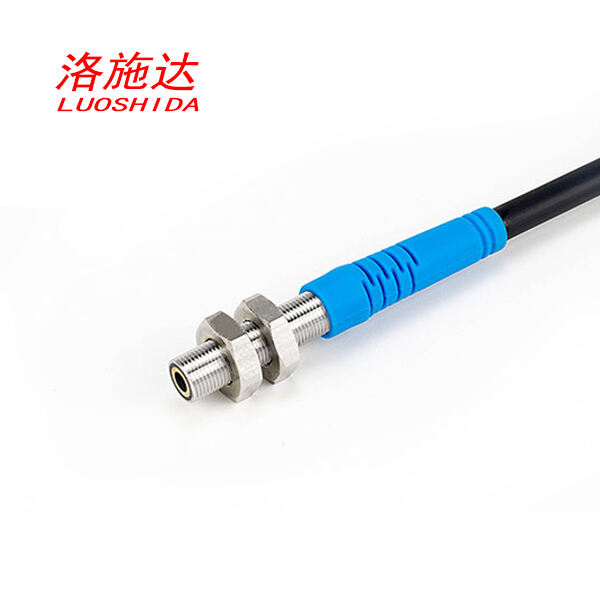M5 Mini Inductive Sensors with Cable Type for Space-Saving Solutions
Understanding M5 Mini Inductive Sensors
The M5 Mini Inductive Sensor is basically a smart device for finding metal stuff without actually touching it. Inside these sensors there's a special coil that creates an electromagnetic field. When metal comes near, it messes with this field and the sensor notices something is there. Pretty clever really. The fact that they don't need physical contact makes them super useful in places where getting things dirty or damaged matters a lot. Think about clean rooms in factories or anywhere machines need to work with high precision. These sensors just keep working reliably even when conditions get tough.
The M5 Mini Inductive Sensors work best when there's not much room to spare but accurate sensing matters a lot. These sensors find lots of use in places like electronic manufacturing plants, helping track where tiny parts end up or keeping tabs on how fast gears spin around. What really stands out about these little guys is their tough build quality plus that IP67 rating which means they keep working reliably even when things get dusty, wet, or shaky. That kind of durability explains why so many factories rely on them for all sorts of challenging tasks where processes need to stay stable without any hiccups along the way.
Key Features of M5 Mini Inductive Sensors
The M5 Mini Inductive Sensors get a lot of attention because of how small they actually are. Space matters a lot in factories and workshops, so having something that takes up minimal room really helps when fitting everything together. These little sensors can squeeze into all sorts of nooks and crannies within machines and other industrial gear. We see this being particularly helpful in places like PCB manufacturing lines or automated packaging systems where every inch counts against tight deadlines. What stands out most though is that even though these sensors are tiny, they still work just as well as bigger models. Factory managers appreciate not having to compromise on performance just to save some precious floor space during installation.
When it comes to how they perform, M5 Mini Inductive Sensors really shine because of their expanded sensing capabilities compared to most competitors in this category. They detect positions reliably even when there are slight mechanical variations in equipment, which means fewer false triggers during operation. With this longer reach, installers don't have to fight with tight spaces to get accurate readings, so the whole system runs smoother day after day. For anyone working on automation projects where knowing exactly where something is matters, these sensors become almost indispensable thanks to their consistent performance in detecting proximity with pinpoint accuracy.
M5 Mini Inductive Sensors last longer because they're built to handle tough environmental challenges. Made from solid materials that stand up to wear and tear, these sensors have an IP67 rating which means they perform reliably even when things get rough around the factory floor. Dust, water splashes, and constant machine vibrations won't phase them, so they work great in places where regular sensors would fail after just a few weeks. The extra protection extends how long these sensors stay functional while keeping operations running smoothly without unexpected downtime. For manufacturers dealing with demanding production lines, this translates into better productivity across different types of industrial settings.
Applications of M5 Mini Inductive Sensors
The M5 Mini Inductive Sensors have become pretty important in factories and automated systems where they help streamline operations and make things run smoother. On assembly lines, workers often rely on these little devices to handle repetitive checks automatically, like spotting whether parts are actually there on those moving conveyor belts. What makes them stand out is how small they are, which means manufacturers can fit them into all sorts of tight spots without major modifications to existing equipment. When installed properly, these sensors can really crank up production speeds while cutting down on mistakes that happen when humans get tired or distracted during long shifts. Factories report better product consistency too since the sensors don't suffer from fatigue or boredom like people do.
For electronics manufacturing, M5 Mini Inductive Sensors play a key role in detecting how close things are, which keeps workers safe and makes sure parts get placed correctly during assembly. These little sensors help line up components just right on circuit boards so nothing gets damaged in the process, and this leads to better quality products overall. When installed properly, they pick up where components are located, stopping them from being put in the wrong spot. Getting this right matters because misplaced parts can cause all sorts of problems down the road, from simple malfunctions to complete device failures. That's why many factories rely heavily on these sensors to maintain product reliability across their production lines.
Sensors play a big role on assembly lines too, handling jobs like counting products, checking if things are there when they should be, and keeping an eye on quality. These devices can accurately track how many items move along the production line. When something doesn't look right, they stop the whole process or send alerts to workers about possible problems. The result? Products that actually meet those strict quality requirements companies talk so much about these days. Factories save money and time because fewer defective items make it out the door, which matters a lot in markets where customers demand nothing but the best.
Comparison of M5 Mini Inductive Sensors with Other Sensor Types
M5 Mini vs. Photoelectric Sensors
The M5 Mini inductive sensors and photoelectric sensors play important parts in automated systems, though they work quite differently. The M5 Mini version detects metal objects through electromagnetic fields, which makes these sensors great for tough industrial settings where dust buildup or water exposure might mess up optical equipment. Photoelectric sensors take a different approach altogether, using light beams to spot objects regardless of what material they're made from. These light-based sensors shine particularly well when it comes to counting items accurately on conveyor belts or simply knowing if something is there at all. That said, many manufacturers still go with M5 Mini sensors because they hold up better over time in rough environments and don't require careful alignment of lenses or mirrors like their photoelectric counterparts do.
M5 Mini vs. Proximity Sensors
The M5 Mini inductive sensors belong to the family of proximity sensors but what really sets them apart is their ability to detect only metal objects. This makes them especially useful in manufacturing settings and electronics assembly lines where metal components dominate the workspace. Capacitive sensors work differently by detecting all sorts of materials which gives them an edge when dealing with multiple substance types at once. But for situations where accuracy matters most, the M5 Mini delivers reliable results without interference from non-metallic items that could trigger false readings. Plus, these little guys fit into tight spots thanks to their compact build, making them ideal choices whenever there isn't much room available for sensor installation.
M5 Mini vs. Fiber Optic Sensors
When looking at M5 Mini versus fiber optic sensors, three main factors stand out: price, how they get installed, and what they're used for. Fiber optics work by sending light through glass fibers to detect things very accurately, but this comes at a price. These sensors tend to be expensive because of all the精密 components involved plus the fact that installation needs to be spot on. That said, they shine in situations where tiny objects need spotting or when working in places with lots of electrical noise since they don't pick up interference like other types do. On the flip side, M5 Mini sensors are budget friendly and much simpler to set up. They really make sense in factories filled with metal machinery where durability matters most. The rugged build handles harsh industrial conditions without breaking down. Most companies end up choosing based on what their particular situation demands. For shops needing something tough yet affordable, M5 Mini usually wins out over pricier alternatives.
Products Featuring M5 Mini Inductive Sensors
The M5mini photoelectric sensor is all about getting things right and working well across various situations, fitting nicely alongside the M5 Mini's inductive tech. This device comes with a diffuse sensor setting that can be adjusted for either 100mm or 130mm range detection, plus it runs on 10 to 30 volts DC power supply. These specs make it pretty flexible when installed in different settings around the factory floor. For durability, the sensor has been built into a tough stainless steel casing rated at IP65 protection level. That means dust and water won't stop it from doing its job reliably day after day.
Enhancing the lineup, the M4 mini photoelectric sensor is tailored to support M5 Mini technologies, featuring a smaller form factor with a sensing distance up to 70mm. Its DC M4 ultra-mini size and infrared light ensures precise operations, and its IP65 rating ensures it remains operational in demanding conditions.
The M6mini photoelectric sensor completes the range by maximizing performance with longer adjustable sensing distances of 150mm and 200mm. It brings durability with its stainless steel construction, supporting advanced M5 Mini sensor applications particularly in larger-scale industrial settings.

 EN
EN
 AR
AR
 FR
FR
 DE
DE
 IT
IT
 JA
JA
 KO
KO
 PT
PT
 RU
RU
 ES
ES



